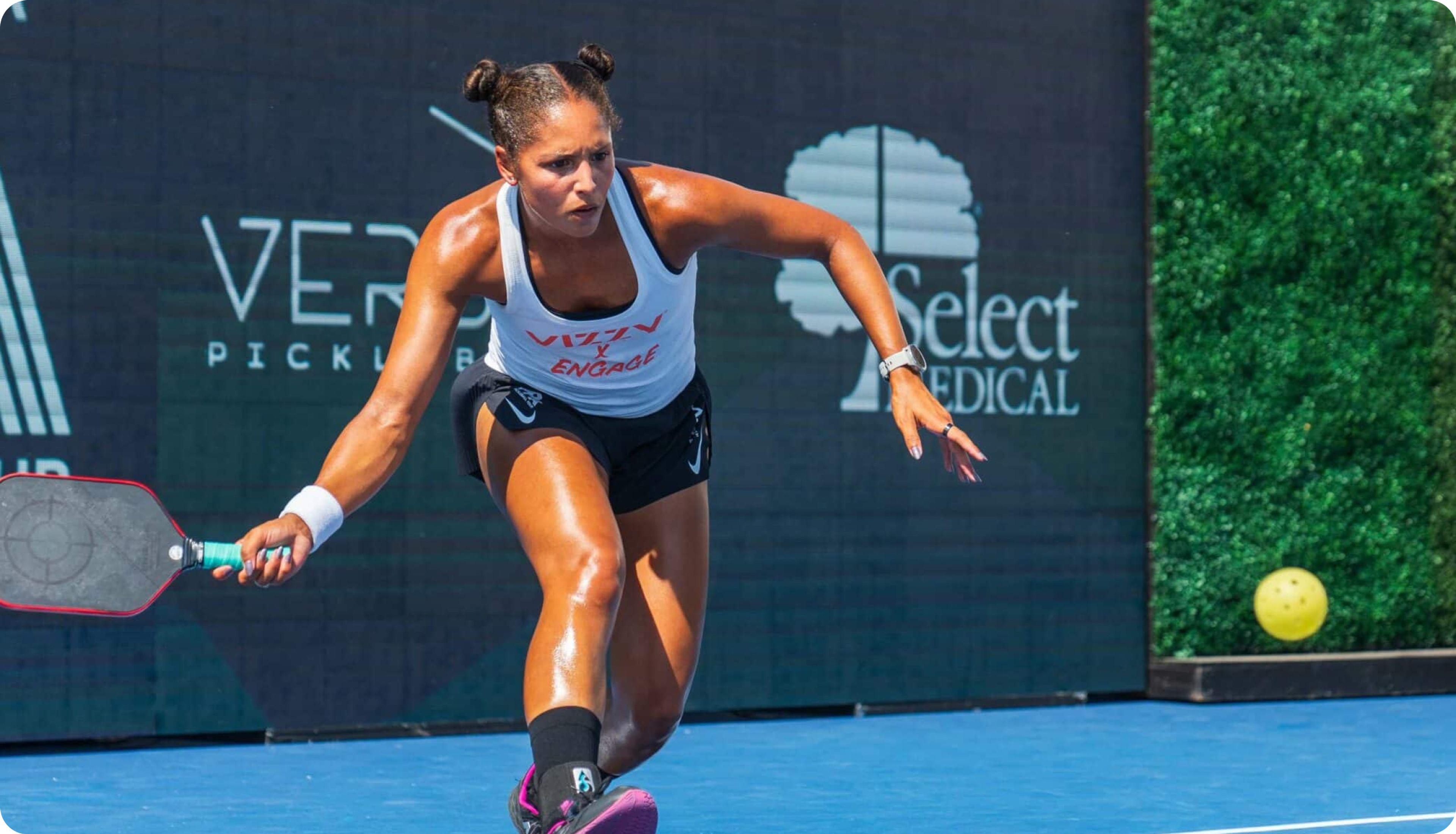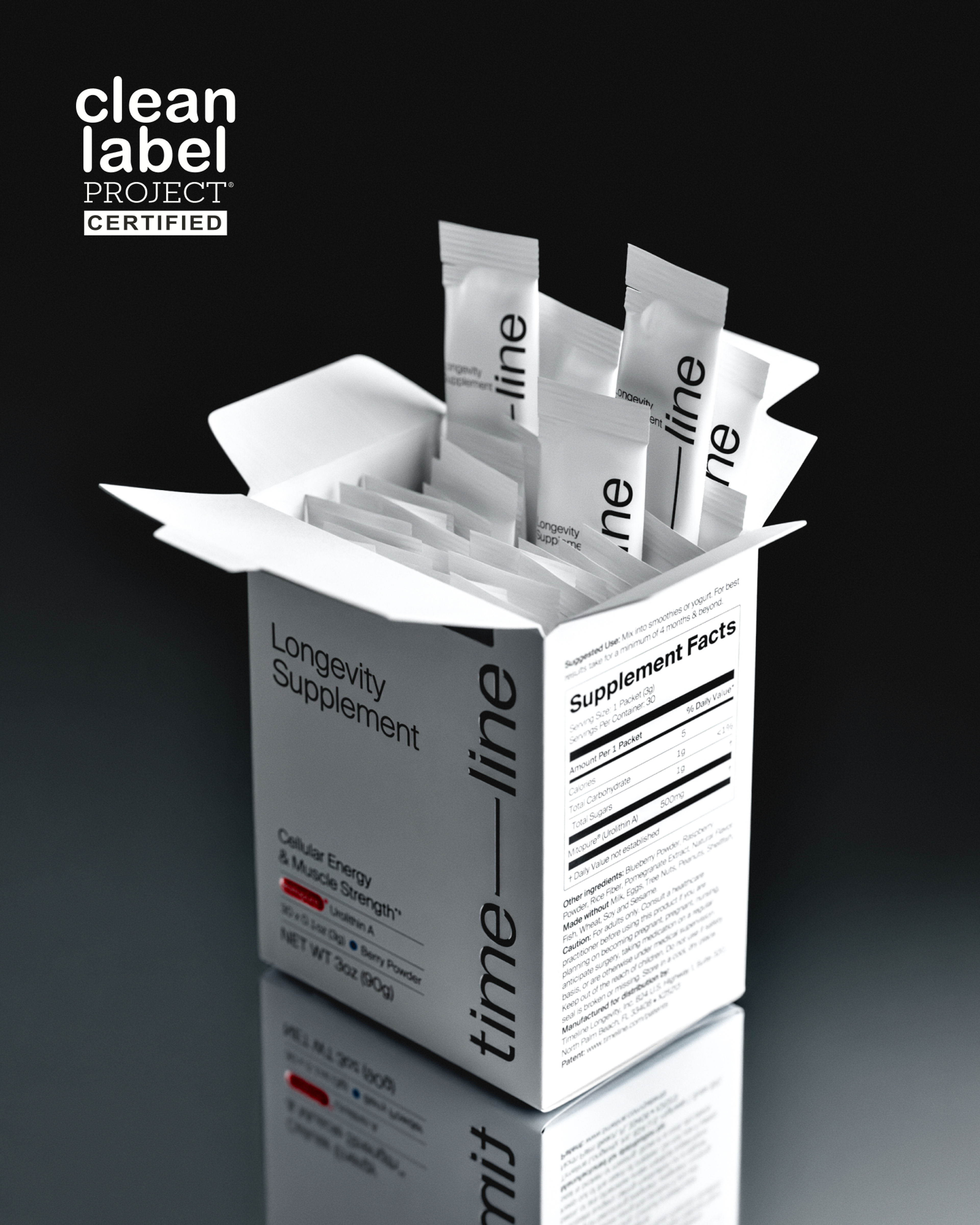Pickleball for Longevity: Learn the Benefits
Pickleball's more than a game; it’s a heart-pumping, muscle-building, brain-boosting activity that adds years to your life and friends to your circle.

What to know
Pickleball is the fastest-growing sport in the U.S., with participation rising over 50% from 2022 to 2023.
People are drawn to the sport due to its lower impact, social connections, and ease of play compared to other racquet sports.
Playing pickleball regularly has been shown to improve cardiovascular fitness, reduce blood pressure, and increase good cholesterol.
Pickleball's combination of side-to-side movement and quick bursts of power helps maintain balance, stability, and muscular function with age.
The social nature of pickleball promotes mental well-being, creating friendships and reducing loneliness, particularly in older adults.
Imagine a sport that doesn't just keep you fit but also sharpens your mind, strengthens friendships, and even promotes longevity. That sport is pickleball.
Pickleball has been the fastest-growing sport in the United States for three years in a row, with participation growing by more than 50 percent from 2022 to 2023, according to the Sports & Fitness Industry Association.
On the fence about stepping up to the net? Consider this: Not only is pickleball fun and simple to learn, with less skill and fitness required than tennis, it also might help you live a longer, happier life while maintaining. In fact, because it’s a racquet sport, it might improve those factors better than other sports. Read on to discover how this ubiquitous game could help you paddle past disease and early death risks.
Timeline | Official Longevity Partner of Pickleball
What is pickleball?
First thing’s first: the game’s got nothing to do with pickles.
Played on a court that is about half the length of a standard tennis court, [1]pickleball’s lively wooden paddles and bouncy, perforated plastic balls require quick reflexes as players try to “dink” the ball over the 34- to 36-inch net.
Like tennis, pickleball is played one-on-one or, more often, in two-on-two doubles matches.[2] The ball must be hit over the net and land within the court’s lines. If the ball bounces twice on the same side, the point is over.
One major difference between pickleball and its larger cousin is the “no volley zone,” also called the kitchen. On each side of a pickleball net, there’s a seven-foot area marked by a line parallel to the net.[3] Players can’t hit the ball when they’re within that distance of the net. This rule reduces the advantage for taller players and also results in fewer overhead slams to lengthen rallies.

Why pickleball is so popular
The game rules and smaller court size make pickleball easier to master than other racquet sports. The “stop and start” nature of the game classified it as high-intensity interval training, making it an efficient form of exercise. While the average age of a pickleball participant is 38, it remains one of the most popular sports for older adults.[4]
When attending an introductory pickleball lesson or class, players can confidently play and enjoy the game within a few minutes. Because it’s on a smaller court than tennis, it’s more accessible, and the close proximity of players alo can inspire new friendships and social connections.
In fact, one of the most-cited reasons that pickleball’s popularity continues to grow is that players make new friends when playing the game.
4 Benefits of pickleball for longevity and physical health
In a study published in 2018 that followed 8,577 people for 25 years, playing racquet sports was associated with a longer life than other sports. While pickleball itself wasn’t studied, people who played badminton—another smaller-court sport when compared to tennis—gained 6.2 years of life expectancy compared to inactive participants. This life expectancy gain was greater than the gains for regular cyclists (3.7 years) and joggers (3.4 years).[5]
Although this study didn’t look at pickleball specifically, the fast-growing game has been found to improve certain longevity markers. In a 2018 study, for example, scientists found that people who played pickleball three times per week increased their cardiovascular fitness by 12 percent, lowered blood pressure by 3.5 percent, and improved their HDL cholesterol (the “good” kind) by 5 percent. [6]
The health benefits of pickleball may also help players maintain function and experience healthier aging:

Pickleball trains side-to-side movement and stability
Unlike sports like cycling and running, which occur in front-to-back directions, pickleball involves lots of quick steps in multiple directions. This can help players maintain lateral stability and balance, both of which become more of a challenge as we age, increasing fall risk. [7]
Pickleball combines short bursts of movement with endurance training
Exercise that forces the body to move quickly and forcefully—like reacting to and hitting a pickleball before it flies past—trains the body for power, a measure of how quickly someone can produce force. Muscular power is strongly associated with improved physical function as we age.[8]
Pickleball is particularly good at building it: In a study published in 2021, inactive adults who started playing pickleball increased their lower body power by 11 percent in just six weeks. That’s almost as much improvement as others saw by performing resistance training and soccer training for four months![9]
Pickleball players become consistent exercisers
This one may be the most important benefit of all. When scientists follow large groups of people through adulthood, those who are consistently active have slower paces of biological aging, and they live longer.[10]Vigorous exercise that’s performed for 2.5 to 5 hours per week confers the maximum benefit.[11]
Due to the sport's social aspects and low-impact nature, pickleball matches typically last longer than tennis matches, averaging around 90 minutes per session. Pickleball players who are new to the game tend to play consistently and often, racking up 4.5 hours per week in one study of newbies.[12]
Benefits of pickleball for mental well-being
Exercise is a highly effective way to keep your brain young.
The cognitive benefits of exercise are often overlooked, but they’re massive: Exercise can have positive effects on depression, anxiety, stress, and even cognitive function[13]. And when it comes to older adults, moderately intense activities—like pickleball—are the most beneficial form of exercise for psychological well-being.[14]
During the COVID-19 pandemic, one study examined the mental well-being of pickleball players. Their findings: Pickleball made the players happy. When they were locked down and unable to play as often, study participants reported significantly lower mental health, more loneliness, and lower life satisfaction. Continued playing frequency was associated with more life satisfaction.[15]
In another study where pickleball was used as a health intervention in rural Utah, almost all participants in a six-week pickleball program reported that they experienced improved mood, more energy, and higher self-confidence after the pickleball program. Testing showed small, but significant, increases in the players’ cognitive function. And 93 percent of participants highlighted the game’s ability to help them make new friends and deepen existing friendships as a reason they enjoyed the game.[16]
Pickleball for social connections
Deep friendships have important impacts on mental health as we age. Scientists have found that ties with friends have a stronger correlation with mental well-being than ties with relatives who aren’t our spouses.[17] This is likely why strong social connections are a key identifying factor of Blue Zones: regions where people tend to enjoy longer lives.
One way pickleball fosters new friendships is through a quirk in its rules: At most pickleball events, partners are asked to switch after each game, putting them on the court with a new player. This keeps the game fresh, but also increases bonds and experiences with new people.

Final Thoughts: Get in the Game
Since pickleball participation is growing so fast, the number of places you can play is skyrocketing, too: There are more than 11,000 places (and counting) where you can play the game across the United States. You can use USA Pickleball’s “Places 2 Play” website to search your area and find one. Because it requires a smaller space than tennis, pickleball can be played with the same equipment indoors and outdoors, so games are running all year.
Many pickleball clubs have introduction or beginner’s days where they’ll help familiarize you with the rules, introduce you to new players, and get you batting balls in no time. Once you’re familiar with the game, you can also set up your own pickleball court anywhere:
If you’re more of a visual learner, consider tuning into the Professional Pickleball Association (PPA), a global governing body that organizes professional pickleball tournaments. This is a great way to wet your feet before stepping onto the court!
Authors

Health & Fitness Writer

Reviewed by
Director Science Communications
References
- ↑
Pickleball Courts and Construction. USA Pickleball. Accessed 16 Sept. 2024. https://usapickleball.org/what-is-pickleball/courts-and-construction/
- ↑
Official Pickleball Rulebook. 2024 Edition. Accessed via https://usapickleball.org/what-is-pickleball/official-rules/ (https://usapickleball.org/what-is-pickleball/official-rules/)
- ↑
Official Pickleball Rulebook. 2024 Edition. Accessed via https://usapickleball.org/what-is-pickleball/official-rules/
- ↑
"New APP Research Reveals Nearly 50 Million Adult Americans Have Played Pickleball in the Last 12 Months; Average Age Drops to 35." Association of Pickleball Players, 29 Mar. 2023, www.theapp.global/news/nearly-50-million-adult-americans-have-played-pickleball. Accessed 18 Sept. 2024.
- ↑
Schnohr P, O'Keefe JH, Holtermann A, et al. Various Leisure-Time Physical Activities Associated With Widely Divergent Life Expectancies: The Copenhagen City Heart Study. Mayo Clin Proc. 2018;93(12):1775-1785. doi:10.1016/j.mayocp.2018.06.025
- ↑
Smith, Leslie & Buchanan, Christina & Dalleck, Lance. (2018). The Acute and Chronic Physiological Responses to Pickleball in Middle-Aged and Older Adults. International Journal of Research in Exercise Physiology. 13. 21-32.
- ↑
Rogers MW, Hedman LD, Johnson ME, Cain TD, Hanke TA. Lateral stability during forward-induced stepping for dynamic balance recovery in young and older adults. J Gerontol A Biol Sci Med Sci. 2001;56(9):M589-M594. doi:10.1093/gerona/56.9.m589
- ↑
el Hadouchi, M., Kiers, H., de Vries, R. et al. Effectiveness of power training compared to strength training in older adults: a systematic review and meta-analysis. Eur Rev Aging Phys Act 19, 18 (2022). https://doi.org/10.1186/s11556-022-00297-x
- ↑
Wray P, Ward CK, Nelson C, et al. Pickleball for Inactive Mid-Life and Older Adults in Rural Utah: A Feasibility Study. Int J Environ Res Public Health. 2021;18(16):8374. Published 2021 Aug 7. doi:10.3390/ijerph18168374
- ↑
Kankaanpää A, Tolvanen A, Joensuu L, et al. The associations of long-term physical activity in adulthood with later biological ageing and all-cause mortality - a prospective twin study. Preprint. medRxiv. 2023;2023.06.02.23290916. Published 2023 Jun 5. doi:10.1101/2023.06.02.23290916
- ↑
O'Keefe EL, Torres-Acosta N, O'Keefe JH, Lavie CJ. Training for Longevity: The Reverse J-Curve for Exercise. Mo Med. 2020;117(4):355-361.
- ↑
Wray P, Ward CK, Nelson C, et al. Pickleball for Inactive Mid-Life and Older Adults in Rural Utah: A Feasibility Study. Int J Environ Res Public Health. 2021;18(16):8374. Published 2021 Aug 7. doi:10.3390/ijerph18168374
- ↑
Wahid, Zahid & Khan, Danial. (2023). Exploring the Impact of Exercise on Mental Health: A Comprehensive Review.
- ↑
Netz Y, Wu MJ, Becker BJ, Tenenbaum G. Physical activity and psychological well-being in advanced age: a meta-analysis of intervention studies. Psychol Aging. 2005;20(2):272-284. doi:10.1037/0882-7974.20.2.272
- ↑
Casper, J. M., Bocarro, J. N., & Lothary, A. F. (2021). An examination of pickleball participation, social connections, and psychological well-being among seniors during the COVID-19 pandemic. World Leisure Journal, 63(3), 330–346. https://doi.org/10.1080/16078055.2021.1957708
- ↑
Wray P, Ward CK, Nelson C, et al. Pickleball for Inactive Mid-Life and Older Adults in Rural Utah: A Feasibility Study. Int J Environ Res Public Health. 2021;18(16):8374. Published 2021 Aug 7. doi:10.3390/ijerph18168374
- ↑
Blieszner R, Ogletree AM, Adams RG. Friendship in Later Life: A Research Agenda. Innov Aging. 2019;3(1):igz005. Published 2019 Mar 30. doi:10.1093/geroni/igz005

·
Nutrition·
Studies·









